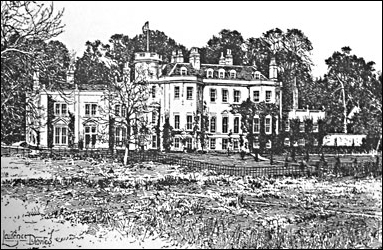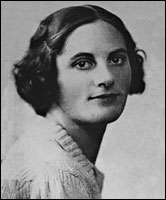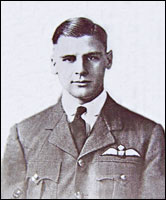
 |
| Little Linford or Linford Parva probably derived its name from a ford over a brook which anciently might have borne the name Lin. This place, though, as to ecclesiastical rights, was originally only a chapelry to Newport Pagnell; yet, as to temporal matters, was distinct from it, and possessed by different lorrds or proprietors. | ||||||||||||||||||||||||||||||||||||||||||
A History of the County of Buckingham: Volume 4 (1927)
Eddeva and Robert, the tenants of the two holdings in 1086, had been succeeded by 1205 by Henry son of Peter de Northampton, who in 1220 conveyed Little Linford to Henry and Ellen de Hauville in trust for their second son Henry, a minor. Also in 1205 Henry son of Peter de Northampton received a charter granting him leave to inclose his wood at Little Linford and to make a park. In 1278-9 Thomas de Hauville had a free park in Little Linford, described in 1302 as 40 acres in extent and stocked with deer. It does not appear that the grantee was ever in possession of the manor. Henry, the trustee was sued by the Prior of Newport or Tickford concerning this land in 1224, but held the manor until his death in 1253. His heir was Henry, a minor, son of his eldest son Ralph, who had predeceased him. In 1258 Thomas de Hauville, youngest son of Henry and Ellen, claimed the custody of the manor until his nephew Henry’s majority, and died seised of it about 1267, when Henry conveyed the manor to Thomas de Hauville, probably his cousin, who died about 1302. His son and heir Thomas was engaged in a prolonged lawsuit with John de Olney, who in 1314 claimed the manor on behalf of his wife Maud, daughter of Nicholas, described as the son and heir of Hugh de Haversham was said to have held it in John’s reign. Thomas de Hauville finally mortgaged Little Linford to John de Olney, was unable to redeem it, and was outlawed at Olney’s suit in 1316. Thereupon John de Somery, the overlord, seized the manor as escheat, and made a settlement of it in 1317 on himself for life with remainder to Thomas and Joan de Hauville and their issue. After the death of John de Somery in 1322 his widow Lucy claimed her dower in Little Linford, and judgement was given on her favour in 1324. Also in 1334 free warren here was granted to Joan Botetourt and her heirs, and was appurtenant to the manor in the 19th century. The mill on the estate in 1086 was probably identical with the water-mill attached to the manor in the 14th century, when mention occurs of a fishpond. Free fishing in the Ouse was also among the rights at that date and in the 18th century, when courts leet and baron were mentioned.
John de Olney laid a claim to the manor as mortgagee, and it was counted among his possessions in 1325. His son John seems to have made little resistance to the encroachment of the overlords, for Little Linford was included in 1338 among manors held in demesne by Joan Botetourt, younger sister and co-heir of John de Somery, and was settled in 1347 by her son John Botetourt on himself and his wife Joyce in tail, a further settlement being made in 1358 on their son John and his wife Maud, daughter of John de Grey of Rotherfield. In 1366 the younger John Botetourt and his wife were completely successful in wrestling it from their tenant William, son of the aforesaid John de Olney, and John Botetourt died seised of Little Linford in 1369, when it was held by his widow Maud. In 1386 a settlement on her and her second husband, Sir Thomas Harcourt. Was made of Newport Pagnell Manor (q.v.), with which Little Linford henceforth descends, and with which it escheated to the Crown in 1461. In 1463 it was granted to George Duke of Clarence, who in 1472 received Newport Pagnell Manor also. The two manors descended together until 1560, when Little Linford continued with Great Linford, but was retained by the Thompsons when they alienated the latter in 1640.
In 1655 Little Linford was settled by Sir John Thompson, kt., on St. John Thompson, his eldest son and heir, he, the said Sir John Thompson, by reason, as is said, of his indifferent capacity (or perhaps mean education and debauched life), became reduced in his fortune, and was compelled to sell this manor of Little Linford; which by indenture dated December 7, 1658, he first mortgaged to William White of Caldecot, Thomas Hacket of North Crawley, and Thomas Kilpin of Newport Pagnell, as he afterwards by bargain and sale dated April 20, 1670, conveyed the fee simlpe to Thomas Kilpin aforesaid; who having bought out White's and Hacket's claims, nearly re-built the manor house here, and dying April 26, 1677. This Kilpin, by his will of 4 January 1675-6, bequeathed the manor to his youngest son John, to whom it had passed by 1677 when Thomas and Richard Kilpin, the elder brothers of John, settled it upon him. In 1700 he conveyed it to John Knapp, who was already living in the manor-house. The eldest John Kilpin, left by his deed of bargain and sale dated April 2nd 1684, released and conveyed all his rights and interest therein, to Mr. John Knapp, citizen of London; who, after the decease of Thomas Kilpin, the second brother (who died in April, 1699, rector of Great Linford, and was buried at Newport Pagnell), purchasing his, Thomas Kilpin's share about the year 1702, of Thomas his son and heir (then of the Middle Temple) and thereby becoming possessed of the entire lordships, laid out considerable sums on the manorhouse, which he made a very commodious and handsome seat, and also decently repaired the church or chapel, in the chancel of which, he made a vault, for the interment of himself and his family. Mr. Knapp was decended from a family of the same name, settled during many generations in Berkshire. He was twice married, by his first wife, he had eleven daughters, but no son. In 1680, he married secondly, Catharine, eldest daughter of Matthew Skynner, M.D., of Welton, Northamptonshire; and on his death, in 1710, this estate descened to his eldest son, John Knapp. By his will, dated 12 December 1709 and proved in February 1710-11, John Knapp left the furniture in the Little Linford house to his widow Katherine, with reversion to his son and heir John, to whom the manor was bequeathed. This John made settlements of the manor in 1713 and 1729, and died without issue in 1746. He directed that all his real estate after the death of his widow Elizabeth, daughter of Josiah Nicholson, should pass in tail-male to the sons of his brother Matthew Knapp, rector of Shenley. Matthew, the eldest nephew, left daughters only at his death in 1782, and Little Linford was inherited by his brother Primatt Knapp, rector of Shenley. He died in December 1793, and his eldest son Nathaniel Matthew, who had suffered a recovery of the manor in 1787, made a further settlement in 1794, probably to the use of his brother and heir Primatt Knapp, rector of Shenley, who inherited Linford the following year. In 1829 he settled the manor on his son and heir Matthew, who succeeded to the remainder of the family estates in 1838. In 1867 they passed to his son Matthew Grenville Samwell, and were inherited in 1896 by his son and heir Mr. John Matthew Knapp, the present lord of the manor.[1927] Extracts from: "The Story of Haversham" by Rev. Samuel Hilton, M.A. Rector of Haversham 1937 To the south-east of the road from Gayhurst to Haversham lies Little Linford Hall, the seat of Mr. John Matthew Knapp, J.P. The house is a three-storied building of stone with a tiled roof and now consists of a principal block with two wings. The building began to assume its present form about 1680, when large additions were made to an earlier manor-house by John Knapp. Considerable alterations were undertaken in the 18th century, and within the last forty years the only remaining portion of the original house was replaced by a modern wing. Some of the 17th century fittings remain, including a fine fireplace of marble, in the overmantel of which is a large trophy of arms. The house stands at the north-east corner of Little Linford Park, which is well-wooded; the fishponds formerly in the park are now included in the gardens recently laid out by Mr. J. M. Knapp in a formal style. Outside the park is a quarry. |
||||||||||||||||||||||||||||||||||||||||||
|
|
||||||||||||||||||||||||||||||||||||||||||
| By Peter North
Mr John Knapp was born in 1661 and he purchased the Little Linford Estate in 1684 he also bought an estate in Shenley in 1698. Mr Robert Bruce Knapp married Nellie Charlotte Platt 24th August 1898 they had ten children, 4 sons and 6 daughters.
In a book entitled "Knapps British Grasses" published in 1842 in which are descriptions and hand painted illustrations of 1300 plants by J L Knapp Esq F.L.S. & AS., is written. By these both man and beast are fed: by these The Knapp family of Little Linford Hall were a very sporty family, the late Mr Robert Bruce Knapp born in 1871 bred and trained fighting cocks and often took them to London, they travelled in a steam, car driven by Tommy Cook. On the back of a portrait of Robert Bruce Knapp holding a fighting cock dated 1950 - which I have seen. He had written on the back this verse. To keep game cocks In 1925 Mr Robert Bruce Knapp eldest son Grenville Bruce decided he could not wait to inherit the estate and so he was paid out his share, to pay this some things from the Hall were sold. In a letter to his son, then living in Africa, Mr Knapp wrote, "the curtains have been sold and realized £770 pounds as they had been cut and were not in good repair I think price was a good one."
Until the 1930's Little Linford wood was owned half by the Knapps estate and half by the Watts estate of Hanslope Park. There were two gamekeepers, Mr. Ruffhead who lived in a cottage in Linford and was employed by the Knapp estate, Mr. Cave who lived in a cottage at Hill farm, and employed by the Hanslope Park estate. Mr. Knapp and Squire Watts each staked their half of the wood on the result of a caterpillar race Mr. Knapp's caterpillar was not doing very well so he pricked it with a pin instead of going faster in just curled up and stopped, he lost his half of the wood. Bucks Standard 20th May 1964
Miss Angela Boswell & Mr. Michael Knapp married The Lord of the Manor of Little Linford and Newport Pagnell, Mr. Michael Knapp was married on Saturday at North Crawley Church to Miss Angela Mary Boswell, eldest daughter of Mr. and Mrs. I. I. Boswell of Crawley Grange, North Crawley. Mr. Knapp, who lives at Little Linford House, became Squire when his grandfather, Mr. Bruce Knapp died. The Knapp family bought the estate on the early 17th century and have lived there ever since. Wolverton Express 15th July 1965 Lord of Manor to sell estate Mr. Michael Knapp, the 38-year-old Lord of the Manor of Newport Pagnell, is selling with vacant possession more then half of the land he owns in this corner of North Bucks. This is in addition to his offer to sell the great common of Bury Field to either the common owners or the Urban Council of Newport Pagnell. The land for sale, about 874 acres in all, forms part of the Little Linford Estate which has been in the Knapp family since the 17th century. It will be offered by auction next month either as a whole or in 13 lots, unless previously sold privately. The bulk of the estate consists of Little Linford Hall Farm of 652 acres. In addition there are valuable areas of sand and gravel estimated at 700,000 cubic yards, fishing on both banks of the River Ouse, and blocks of agricultural land and woodlands. Building site Besides the stone-built Georgian main house there are two secondary houses and, of the 13 cottages on the estate, seven are vacant. The walled garden of the original Little Linford Hall is being offered as a potential building site for a house with a lake, paddock, and woodlands. Speaking to the “Express” from Little Linford Hall Farm on Wednesday morning, Mr. Knapp explained that this land is all of the estate west of the Motorway, bordering on what local people know as “the gated road”. Since has became Lord of the Manor in 1958 Mr. Knapp has made vast changes on the estate. First of all the old Linford Hall was demolished; then barbed-wire fences were erected along the gated road. Marshy land was properly drained and for the first time in living memory rich crops were harvested on field that formerly grazed sheep and cattle. But why, now he was “on his feet” and making such an obvious success of his farming, should Mr. Knapp want to sell all but some 600 acres of his entire holding? “I’m looking for a much more substantial estate,” he said, “not necessarily here in North Bucks. Something between 2,000 and 3,000 acres. Something that is not split in two by the M.1.” Even if he moved away he would continue to farm Portfields and Bury Field, he added. Asked to comment on proposed sale by the Merchant Venturers of part of their Ravenstone Estate, also with vacant possession, Mr Knapp declared: “we all rather fear the state the country is being brought to is such that things may be ‘dicky’ in a very short time. |
||||||||||||||||||||||||||||||||||||||||||





